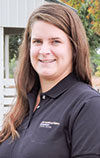For some, these warm summer months are the time of year we can play catch-up. The days are long, the cows and calves are still out on pasture, and we might have just enough time to catch our breaths and catch up on the long overdue task of updating our records.
As responsible producers, we must be able to document the safety of our product and, in turn, the health of our livestock. But our cattle are only as healthy as the forages and feedstuffs we provide them, which is why maintaining accurate records of the feedstuffs produced and fed on our operations is key in good management.
Over the summer, you should be keeping records of pesticides and herbicides applied to crops being grazed or harvested and later fed to cattle. Many pesticides and herbicides used on crops have withdrawal periods, specifically if the crop is to be harvested as a forage source for livestock. An easy way to keep track of what is applied and when is to take a picture on your smartphone of the product. When you take the picture on your phone, it will record what date it was applied, and you can add in the notes of the photograph what field it was applied to.
You can also take a picture of the field itself before the product was applied, add an event to your calendar of when the withdrawal period ends, and then you know when you can safely harvest or graze the field. To keep things in one place, you can save it into an album on your phone for quick access. The same can be done for feed that is purchased. If you are not the best at keeping track of invoices, receipts and feed test results, you can take pictures of all those things and save them into an album on your phone as well. All feeding records should be maintained for a minimum of two years.
If you are tech-savvy enough, you can even email all these items or save them into the cloud and have a backup in case your phone ever “accidentally” takes a dip in the creek or goes through some other unfortunate mishap. There is, of course, a plethora of other record-keeping apps at your disposal to choose from, but sometimes the easiest thing is a quick picture on your phone that you can follow up on later when things slow down again.







